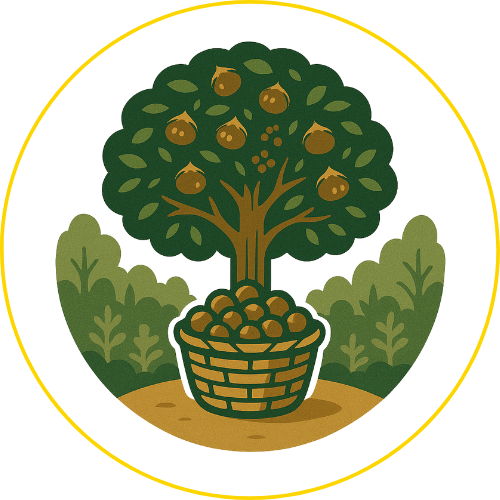It Takes a Village to Raise a Child—And a Whole City to Build a Farm
Our first chestnut orchard isn’t just 100 trees in the ground—it’s the product of mentors, neighbors, and farmers from Ohio to West Virginia. This story is about cultivars, legacy, and the people who helped us grow.

The first 100 trees going in at Goldberry Grove aren’t just about chestnuts. They’re about relationships. They’re about research. And they’re about carrying a legacy forward—ten cultivars at a time.
Each of these cultivars comes from the legendary Route 9 Cooperative in Carrollton, Ohio, where I’ve been lucky enough to spend time with Greg Miller—a true elder in American chestnut farming. Ten trees of each cultivar, each carefully selected, packed with genetic potential and hard-earned resilience, are now headed from Ohio soil into West Virginia clay.
This isn’t just a geographic shift. It’s a generational one.
The Allies Who Made It Possible
Greg and the growers at Route 9 have spent decades refining their chestnut breeding, selecting for disease resistance, flavor, cold tolerance, and yield. Because of them, first-generation growers like me have something tangible to plant. Not a guess. Not a gamble. A proven lineage. You can read more about that visits here:
👉 The Roots of a Chestnut Legacy: Route 9’s Formula of Success
👉 The Orchard That Refuses to Obey Buzz.
And this journey wasn’t taken alone. Alongside Route 9, I also visited Perfect Circle Farm—a place that defies trends in the best way. These trips shaped not just what I planted, but how I think about trees as part of a living system.
I’ve also connected with two West Virginia-based chestnut growers, incredibly generous with their time and knowledge. Site visits are on the horizon, and I consider them essential allies as we navigate our first few years.
And then there’s my local permaculture and nursery consultant, who’s been instrumental—not just in helping us design a thoughtful agroforestry layout, but in guiding us through grants, timelines, and decisions that will shape the next decade. (More on that journey here: Navigating the Agroforestry Grant Process.)
The Local Allies That Ground Us
You don’t build a farm alone. You build it with the people who show up—not with grand gestures, but with consistent presence and real grit.
Take Kevin. He’s become a father figure to me in a way that’s hard to put into words. A man who works with his hands, fixes trucks and bikes, and carves out his 100-acre legacy here in West Virginia. He didn’t have to “adopt” me—but he did. Helped me navigate snowstorms this winter, repaired a critical tractor part, and offered up wisdom that only someone who’s lived it can provide. Kevin asks for nothing in return, so we return the love in the only way he’ll accept it: puzzles. (His daughter let it slip that he’s secretly obsessed, so we keep ‘em coming.)
Then there’s Zack, my neighbor and now, my brother in all but blood. He’s West Virginia through and through, and at least once a week, forgets that I’m not from these parts. He’s introduced me to arborists, brewers, and foragers and helped root me in this place faster than I could have on my own. Zack’s chasing his own homestead dream, and when we cross paths—between his camping trips and time with his girlfriend—it’s always grounding. Even better, his daughter and mine have become fast friends. That kind of connection matters more than metrics.
Where Research Meets Reality
This orchard didn’t come together from thin air. It came from months of Facebook deep dives into nut orchard groups (like this one and this one), from late nights reading about JADAM natural farming, and from learning how others blend low-input methods with real-world farm demands.
Books, PDFs, forums, messages, podcasts—every tool was fair game. And through it all, one thing became clear: this orchard isn’t just about trees. It’s about people who believe in a different kind of agriculture. People willing to share what worked and—more importantly—what didn’t.
Legacy, Southbound
So here we are. One hundred chestnut trees, ten cultivars strong, going into the soil in April. It’s the start of something bigger than yield. It’s a living tribute to the people who came before me and the communities that helped me get here.
From Greg’s decades of breeding to the neighbors down the ridge—I’m proud to say this orchard is built on more than soil. It’s built on allies.
And that might be the most critical input of all.

